What to do and see on Madeira – The ultimate sightseeing guide
In this sightseeing guide to the island of Madeira, Portugal, we want to share some of the places we visited during our two-week trip to this magical island. We rented a car for the total of those two weeks. Thus we were able to drive and explore all around the island. If you are planning your next trip to Madeira, we hope this post can give you some inspiration on what to see and do on this magical island!

For the purpose of this sightseeing guide to Madeira we divided the island into a north, east, south and west region and will show you some of the places that await in each region through our lens. It is rather subjective where each of these regions start and end, we simply chose what we thought would fit best for this guide. So, without any further rambling, let’s start with the first and you could say our favourite region.
What to see and do on Madeira’s West Coast
Compared to the East of the island, the West is still a little less developed. Therefore it feels a little more raw and wild. It has less vacation houses and more forests and small villages. Our venture along the West Coast includes some of our favourite spots on the island.
For the sake of this post the West Coast starts in Faja da Ovellha, the small village where we stayed, and ends in Porto Moniz.
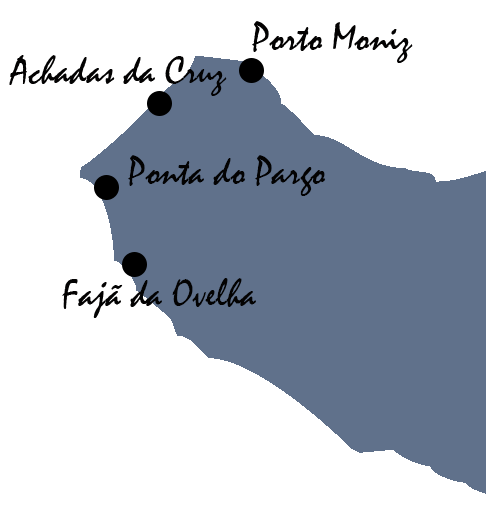
Ponta da Pargo
Our first stop was Ponta da Pargo. We parked our car at a viewpoint called viewpoint of Fio. After soaking in the views from the small platform looking out onto the sea, we slowly made our way towards the lighthouse over a small path through a field.
You have amazing views on this path. Nothing but the lush green colour of the grass and the blue of the sky and sea as far as the eye can reach. We were really lucky with the weather because the sun made the colours all the more vibrant. Cows were standing alongside the path.

The lighthouse Farol da Ponta do Pargo was built in 1922 on top of the Ponta Vigia cliff. While its structural height is only 46 feet, due to its location on the cliff, the focal point of the light is 1040 feet above the sea. This makes it one of the highest in the world!
Its light is therefore still visible from 26 nautical miles away! Additionally it is considered to be Portugal’s highest lighthouse.

After heading back to the car we made our way further north. There are numerous viewpoints along the route to Porto Moniz. Usually they are marked on signs next to the street.
Miradouro do Teleférico das Achadas da Cruz
We stopped at the Miradouro do Teleférico das Achadas da Cruz. It is located on a steep cliff and a gondola takes you down to a small village at the bottom. The gondola is not only for tourist purposes, locals take it as well to get to their houses at the bottom. The viewpoint itself offers quite stunning views. Apparently at the bottom of the cliff one can find a beautiful and quiet beach and side walk along the coastline. Unfortunately the weather made a turn for the worse at that moment, so instead we decided to drive straight to Porto Moniz.


Beautiful Forest Roads
The road is lined with a very beautiful forest that seems super raw. We were surprised though to see that the forest consists of so many Eucalyptus trees. A quick google search actually revealed, that the regions native forest was greatly reduced after the settlement in the 15th century. During that time, people wished to clear land for agriculture, road building and urbanisation. As the population realised that there was a need for more wood on the island, they used non-native and unfortunately also invasive species for reforestation such as Eucalyptus.
Porto Moniz
Then we arrived in Porto Moniz. On the road down the hill, we stopped at yet another viewpoint overlooking the beautiful town.

Porto Moniz is most famous for its natural lava pools.
We parked our car and first went on a quest to find a restaurant since it was already well past lunch time. We found a lovely little shop called Conchinha. It is more like a snack bar and it has a rather simple menu. But we really enjoyed the food there. It wasn’t very expensive either and their toasts were amazing!
With a full belly, we headed to the pools. When we visited, it was way to cold for our taste to get into the pools. The water was freezing cold and the sun wasn’t out either. In hindsight I do regret a little that we did not take the opportunity, since there were next to no people.
Instead we took a stroll in between the pools and soaked in the views. We actually sat down on a bench for quite some time, mesmerised by the sight and sound of the waves that kept splashing against the rocks.


What to see and do on Madeira’s North Coast
From Porto Moniz until Porto da Cruz is a region we would classify as the North of Madeira. The North of Madeira is characterized by huge steep cliffs and tends to be more rainy since the clouds often get stuck here.
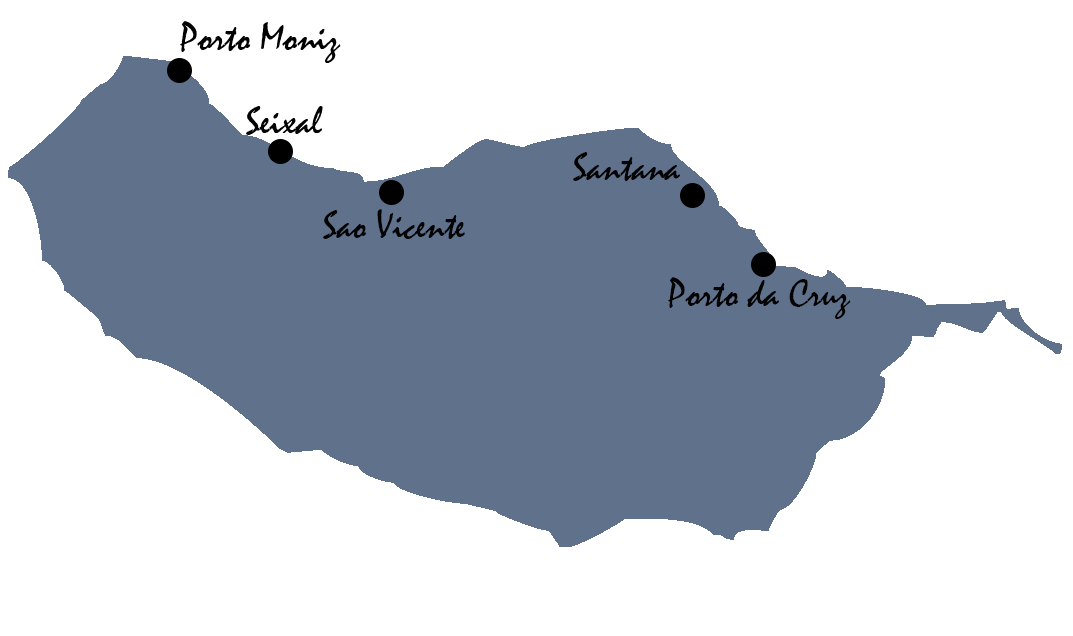
The Scenic Route
When searching for what to do in this region of the island, we read about a scenic route that is supposed to go along the shore of the North of the island just right under the cliffs. However when we first drove from Porto Moniz to Sao Vicente, we were led through many tunnels but did not seem to find this so-called scenic route.
Google Maps still clearly portrays the route so we tried several times to find it but had to ultimately realise that this route simply does not exist anymore! You can see that many parts of this route collapsed and others are closed due to rocks on the streets that fell from the cliffs.But even without the scenic route, the North has some really scenic driving in store. There are simply more tunnels in between the views now.
From Sao Vicente on we attempted a second try at finding the scenic route. But again we were met with disappointment. However the roads did start to get a little more adventurous after Boaventura, where the tunnels and the motorway end.

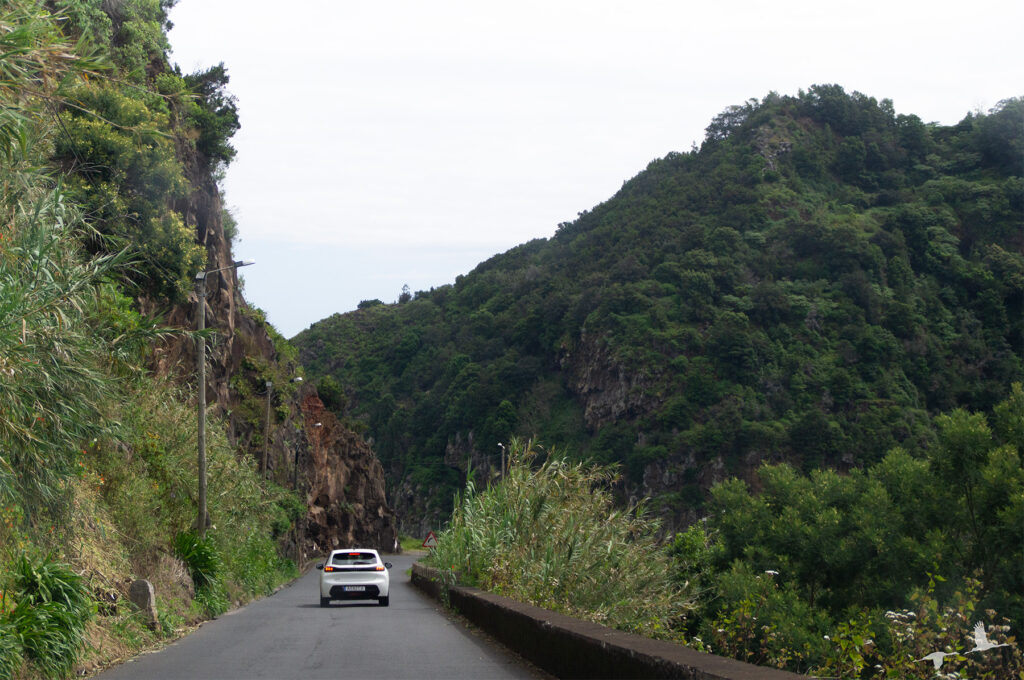
Seixal
Madeira is known for its black sand beaches due to the volcanic origins of the island. Since there are only a handful of those beaches, they are not as easy to find if you don’t know where to look. However in Seixal you can find a pretty impressive one. The temperatures and weather were not actually what we would consider beach weather, nonetheless we think the beach was wort the visit!
You can drive right up to it and there is a small parking lot just up the street from the beach. We first made our way over to the dam that encloses the beach on one side. We sat down on one of the walls looking out to the sea and watched the many crabs running around on the black rocks below us.
After some time we took the stairs towards the actual beach and set food on the black sand. The view is amazing with the contrast of the lush green hills pierced by waterfalls, the black rocks and the dark blue sea.
If you are there, just take a handful of black sand and let it run in between your fingers, believe me it is a truly amazing sensation! We marvelled quite some time at the black sand and let it run through our fingers more than once.


Sao Vicente
Sao Vicente is a small town nestled in between two cliffs/mountains. Directly on the shore lies only one street with some shops and restaurants. If you drive past the cliffs inland, you are immediately in the city centre of this beautiful town.
We parked at a parking lot near the intersection of the VE4 and Est Dom Joao V (the parking has no name on Google Maps) and walked through the small city centre.
As a tip (Warning: complicated directions incoming;)): if you follow the Rua do Cemitério and then walk up the steep following street, you get to a staircase that leads to the winding street which leads up the mountain. If you follow that street up a little further always keeping right, then follow the Estr. da Vigia, you will reach a truly amazing viewpoint with stunning views over the city and its backdrop! (On Maps.me the viewpoint is called Miradouro da Vigia, on Google Maps its not figured).
The scenery kind of gave us South America vibes. But since we have never actually been to South America this might only be our impression.
Sao Vicente is also the home of several caves, but unfortunately they were closed when we visited.

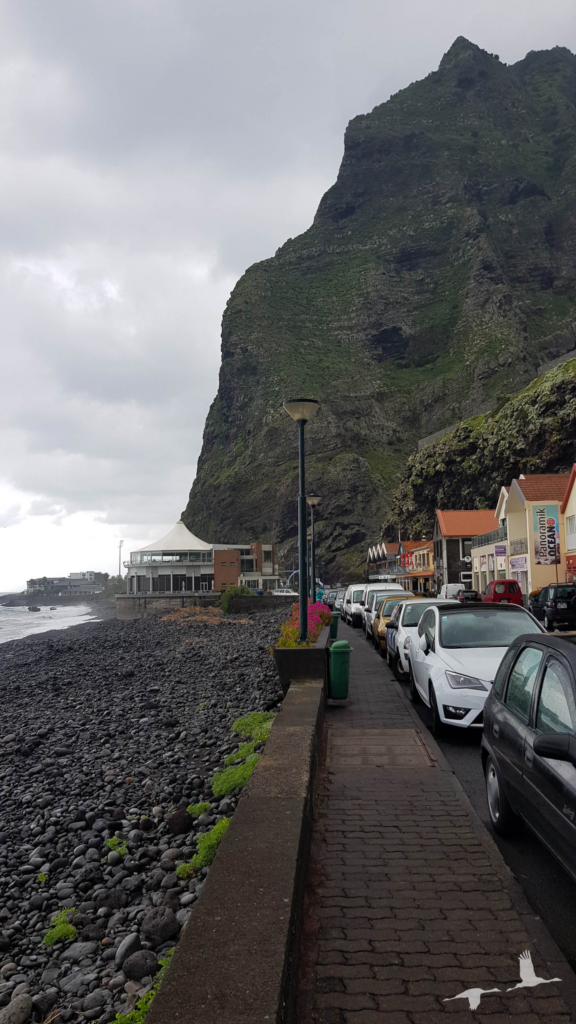

Santana
Santana is a well known village due to it being the site of the famous Madeira houses. These houses represent a part of Madeiras heritage. Actually they used to be farmers houses. They are made out of wood and have straw as a roof, since those were materials that were abundant to the farmers back then. The region of Santana is also classified as a UNESCO Biosphere Reserve.
The town itself is rather small. There is a parking garage right in the center of the town across the street from where some of the restored famous houses are located. Every house hosts a different shop/exhibition. One of the houses has a small souvenir shop and lets you try Puncha for 1€ a shot. The whole site is probably a little underwhelming considering these houses are portrayed everywhere as a headliner for Madeira (including our banner, we know). But we do think its worth a stopover if you are in the area!

Porto da Cruz
From Santana we made our way to Porto da Cruz. Porto da Cruz is actually a small town and there is not that much to do. We chose to visit since we were in the area and on the hunt for some lunch.
First we walked up to the beach and spent some time looking at the waves crashing on the rocks. Then we walked around the town and eventually sat down to eat lunch. We decided to go for fish since Madeira is an island known for its fishing and up to this point we still had not eaten any fish. They offered quite an interesting menu: fish with caramelized Madeira bananas (which turned out to be quite a good combination)!
Porto Cruz lies right next to a hill called Penha d’Águia, which is 580m high. A hike to the top of the hill offers good views of the surrounding area. Porto da Cruz is also home to a brewery and the town is often frequented by surfers since it has a surf school.


The East Coast
The East is probably the region of the island we spent the least time in. Its where the airport is located and the slopes of the hills are quite packed with houses. However you have a clear view over to the Islas Desertas from here.

Hike the Ponta de São Lourenço
Ponta de São Lourenço is a headland in the east of Madeira and contains the easternmost point of the island. The headland was named after one of Madeiras discoverers’ ships. Nature-wise Ponta de São Lourenço is different from the rest of the island as it is mostly covered by grassland. In 1982 it was classified as a nature reserve and is also recognized as an Important Bird Area. This variety in landscape makes this hike all the more interesting and unique compared to other hikes on Madeira.
You can find all the information you need on this hike in a separate post (read: Ponta de São Lourenço Hiking Trail).
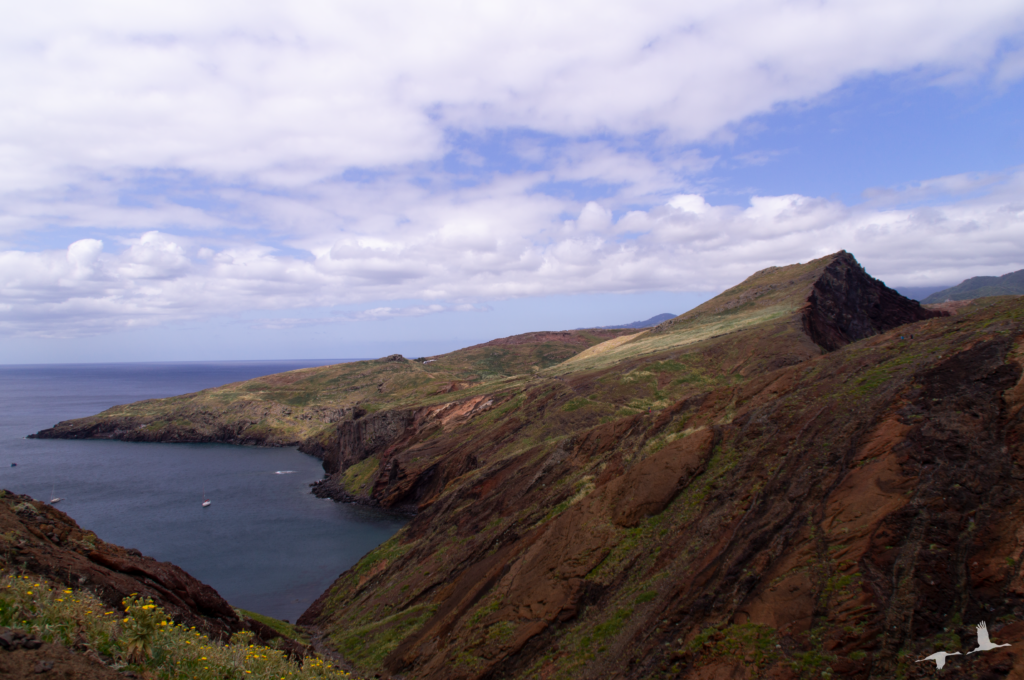

The Airport
The airport of Madeira is situated in Santa Cruz and it is hard to miss when you are in the area. The airport used to be known as one of the most dangerous airports due to its location and short runaway. In 2002 an extension of the runway was inaugurated. But the airport still allows for some spectacular landings and plane spotting can be quite fun. All along the fence right above the runaway you can find parking spots to watch the planes – and we found that you are never alone marvelling at the planes. Another option is the viewing deck off the airport. It is split in two sections, one can be entered after you went trough security, the other before.
The South Coast
The south of the island is the more sunny and warm side of the island. But therefore it is also the more touristy and in general more inhabited side of the island. Nonetheless it is home to some beautiful villages and numerous banana plantations.
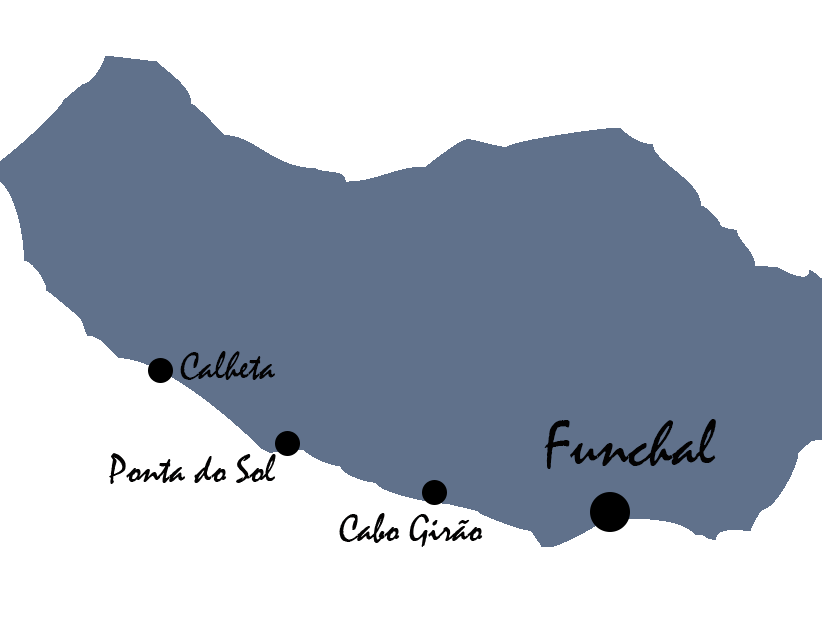
Funchal
Funchal is the capital city of the Autonomous Region of Madeira and situated in the South of the island. The first settlers named the city after the abundant wild fennel that grew in the valley where the city was founded. The city of Funchal is framed by a spectacular backdrop consisting of beautiful lush mountains on one side and by the vast Atlantic Ocean on the other (read: How to spend a day in Funchal).
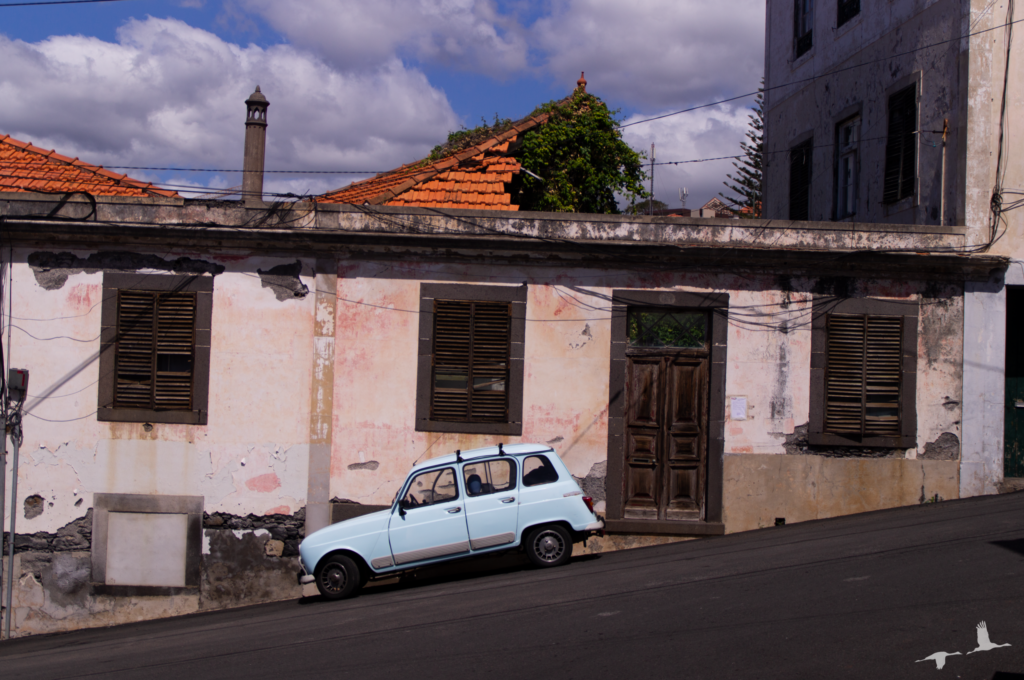
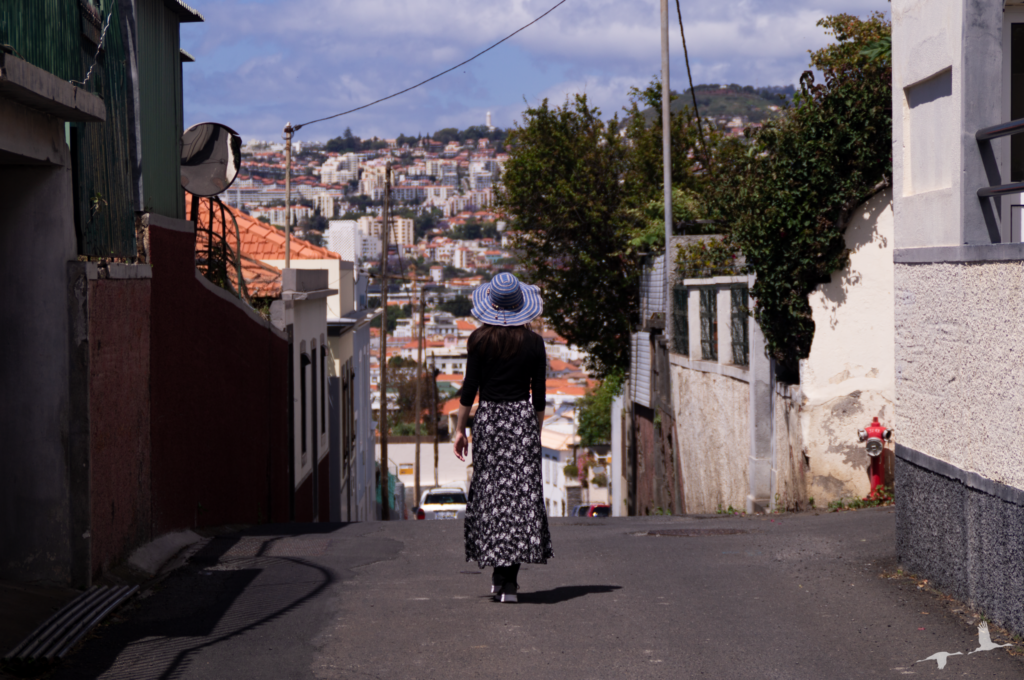
Cabo Girao
Cabo Girao is considered to be the highest cliff in Europe with over 560 meters in height. The drive up to the view point is definitely quite steep and curvy! On top you can find a viewing platform with glass panels in the middle. They allow you to look straight down the cliff and make you realise how high up you actually are. The views of the terrace fields and the sea below are amazing and you can also see quite far along the coastline of the island. If the glass panels are not for you, the sky-walk also offers lots of space with normal ground for you to stand on!
Behind the platform you can find a souvenir shop and a small restaurant.
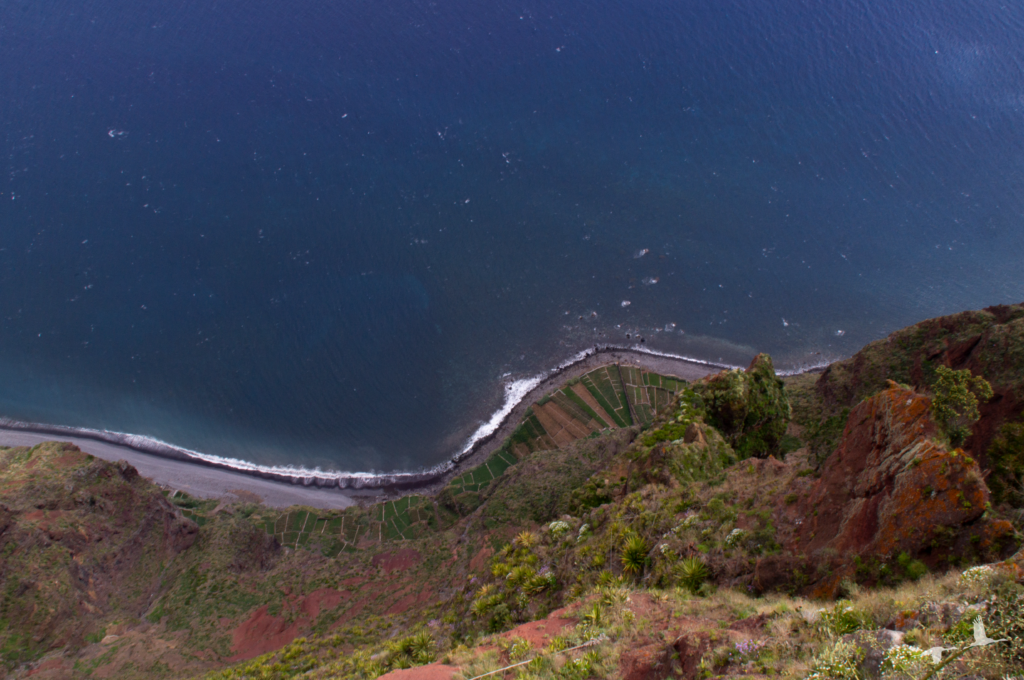
Ponta do Sol
This small town was actually the first place we visited on our first day exploring the island! You can park right next to the street or in an old tunnel that has been converted to a parking lot with lots of wall art on it.
Next to the cliff there is a walkway that leads to a stone pier. This walkway connects the coast with a small island made of rocks through a beautiful bridge. The viewpoint from the pier offers amazing views of the cliffs and the banana plantations around Ponta do Sol.
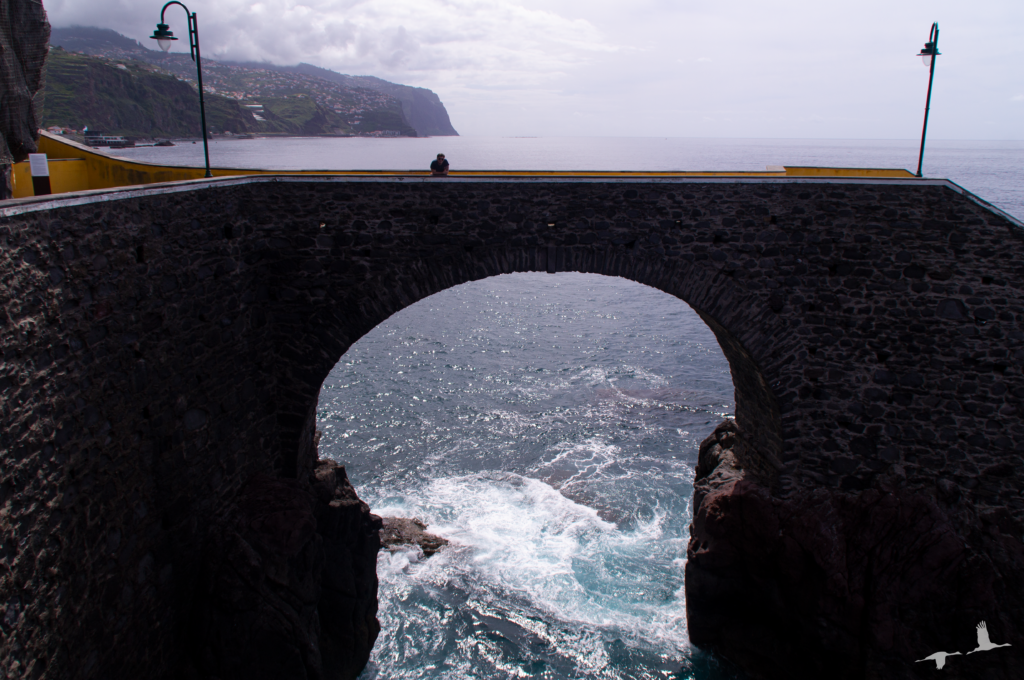

Ribeira Brava
Ribeira Brava is another very touristy town, situated at the intersection of three major streets in Madeira (the VR1, VE3 and VE4). Therefore it is also home to several gas stations and supermarkets.
In the city center of Ribeira Brava lies a beautiful little square in front of a church. You can find several restaurants along the shore and a lovely little walkway along the coastline.
We did not spent that much time in Ribeira Brava, but we did find ourselves passing through quite often due to its location.
Calheta
Calheta is a one street town at the bottom of a cliff and definitely a tourist hot spot. There is a small port and artificial beaches as well as several hotels, apartment complexes and restaurants. We usually only came here for grocery shopping or to stroll around the port and eat ice cream. Since there were not that many tourists when we were there though the place had a quite relaxed feeling to it. Therefore we did enjoy spending time here quite a bit. Plus due to its location on the south end of a cliff it was one of the few places on the island, where it was sunny and warm most of the time!

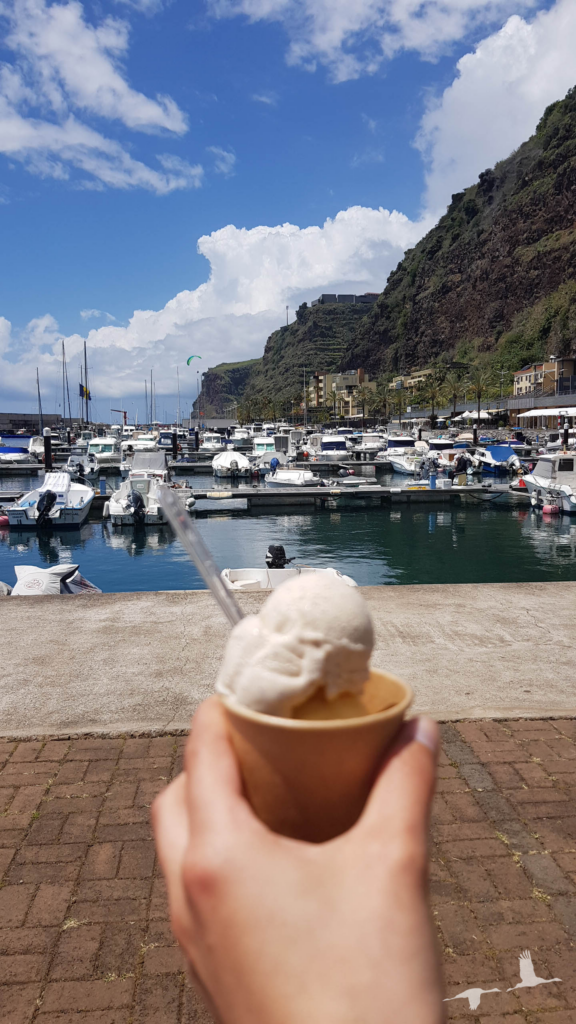
Arco de Calheta
We stayed in Arco the Calheta during the second week of our stay in Madeira. The town lies in the middle of numerous banana plantations. There is not that much to do here but we did enjoy our time here a lot since our accommodation offered beautiful views of the area.
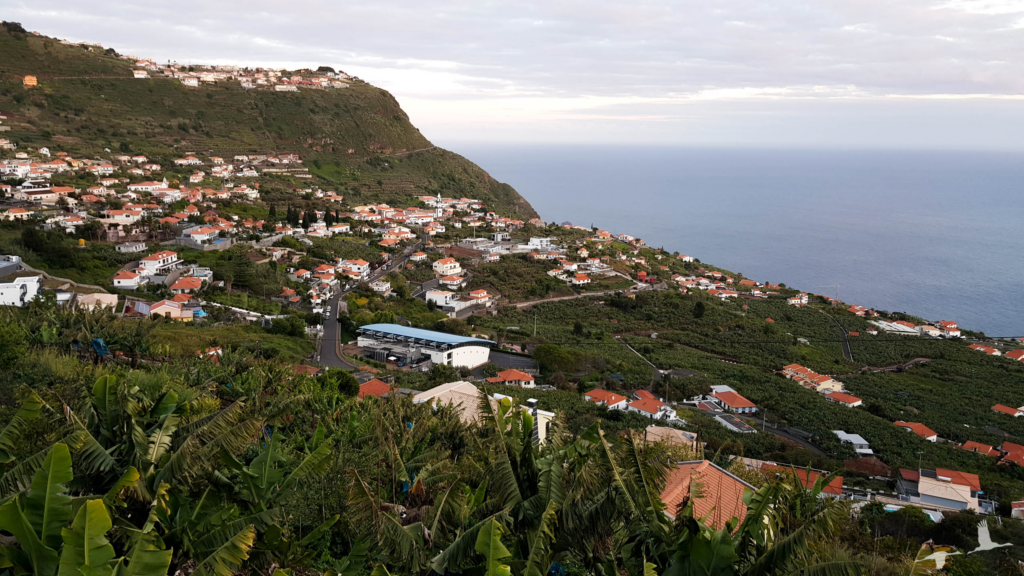

Hiking the inland of Madeira
Levada das 25 Fontes & Levada do Risco
This hike starts at a parking lot high up in the inland mountains of Madeira and leads downhill into a lush valley. The highlight of this hike are 2 waterfalls that are located only a short distance from each other. Both are very different from each other but equally breathtaking (read: Leavada das 25 Fontes/ Levada do Risco Hiking Trail).


Fanal
The forest of Fanal or the Laurasilva of Madeira is one of the few surviving areas of primary laurel forests which used to exist in many parts of Europe before the last ice age. Since 1999 the forest is part of the UNESCO world heritage.
The woods are due to their elevation often overdrawn by clouds and fog. Combined with the twisted forms of the laurel trees, this gives the forest an atmosphere as if it came straight out of a fairy tale.
There are various hiking trails leading through different parts of the forest. We wrote a more detailed post about our time here and the route we took (Hiking the Mystic Forest of Fanal).


Things we missed
To complete this sightseeing guide, we want to mention some of the things that we would have liked to see but did not get around to here. Maybe they will find a way into some of your itineraries:
- Christo Rei: In Caniço you can find a statue of Christ overlooking the sea.
- Camacha: is a town known for its basket weaving art.
- Camara de Lobos: is supposedly a rather picturesque fishing village.
- Hike to Pico Ruivo: Pico Ruivo is the highest peak of Madeira and offers amazing views. We actually attempted to do this hike, only to find ourselves before a closed off road due to construction work. This was quite a disappointment for us.
- Ribeiro Frio: is located in a valley in the middle of the mountains and is surrounded by numerous viewpoints and amazing hikes.
- Porto Santo: An island located next to Madeira, known for its beautiful beaches. It can be reached by ferry from Funchal.
- Seeing whales and dolphins, which frequent the island of Madeira quite a lot.
- Diving: Madeira has some amazing diving spots!
